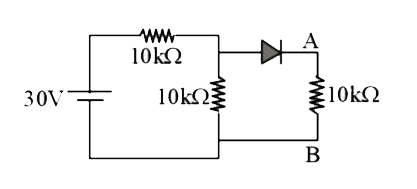Potential difference between A and C is:
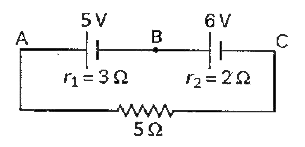
A
55 V
B
0.55 V
C
550 V
D
5.5 V
Video Solution
Text Solution
The correct Answer is:D
5.5 V
Explanation: I=ε1+ε2r1+r2+R=1.1A
VAC=VA−VC
=(5+6)−(1.1)(3+2)
=5.5V
|
Topper's Solved these Questions
- SAMPLE PAPER 2BOOK - EDUCART PUBLICATIONCHAPTER - SAMPLE PAPER 2EXERCISE - SECTION-B
24 Videos
- SAMPLE PAPER 2BOOK - EDUCART PUBLICATIONCHAPTER - SAMPLE PAPER 2EXERCISE - SECTION-C
6 Videos
- SAMPLE PAPER 04 (SOLVED)BOOK - EDUCART PUBLICATIONCHAPTER - SAMPLE PAPER 04 (SOLVED)EXERCISE - SECTION-C
6 Videos
- SAMPLE PAPER 3BOOK - EDUCART PUBLICATIONCHAPTER - SAMPLE PAPER 3EXERCISE - SECNTION -C
6 Videos
Similar Questions
Knowledge Check
There is a uniform magnetic field B normal to the xy plane. A conductor ABC has length AB=l1, parallel to the x axis, and lengthh BC=l2 parallel to the y-axis. ABC moved in the xy plane with velocity vxˆi+vyˆj. The potential difference between A and C is proportional to
Avxl1+vyl2Bvxl2+vyl1Cvxl2−vyl1Dvxl1−vyl2The potential difference between A and B is
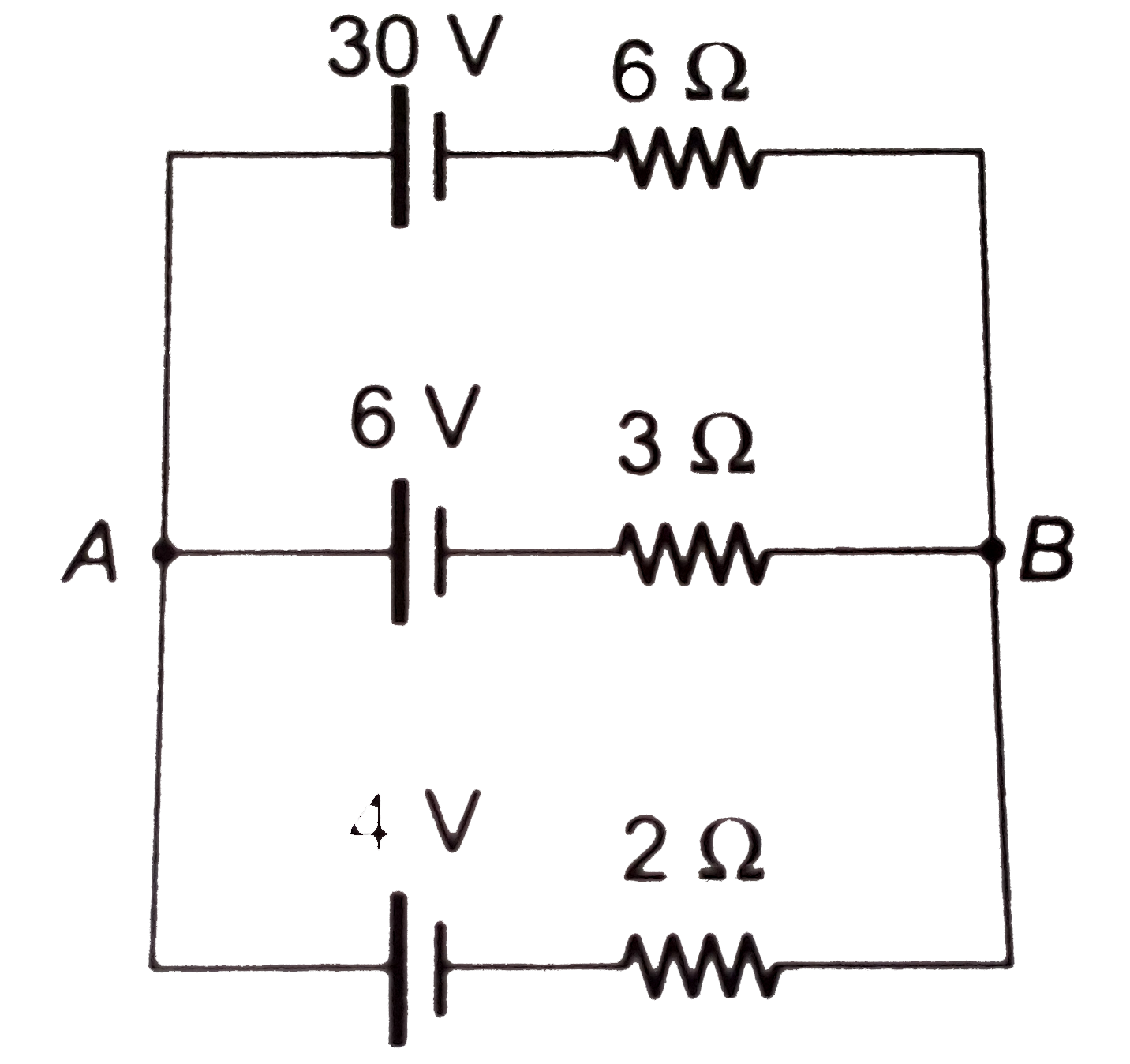 .A9 VB15 VC10 VD20 V
.A9 VB15 VC10 VD20 VIn the circuit shown in figure potential difference between A and B is
 A30 VB60 VC10 VD90 V
A30 VB60 VC10 VD90 V
In the network shown in the figure, the potential difference between A and B is :
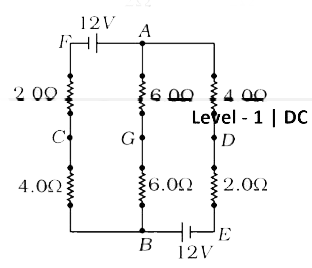
View SolutionIn the figure, potential difference between A and B is
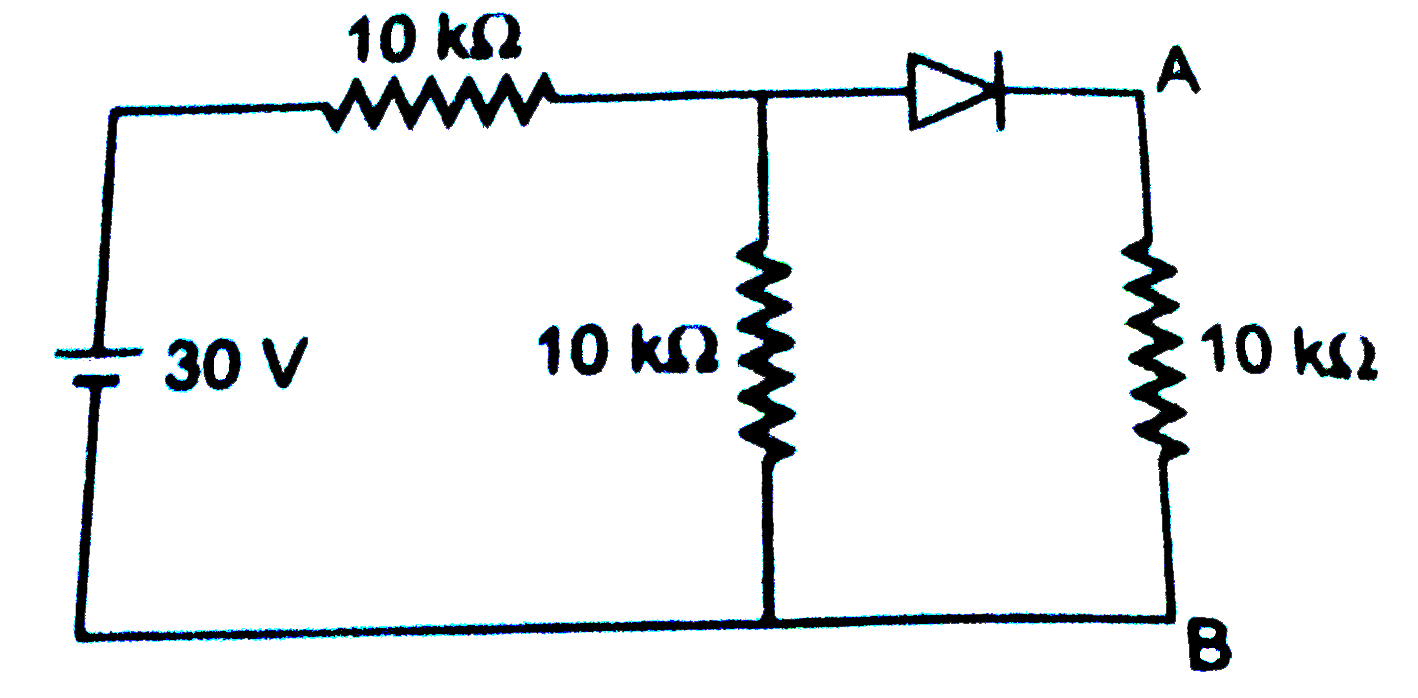
View SolutionIn the given circuit, the potential difference between A and B is

View SolutionIn the adjacent figure, the potential difference between A and B is
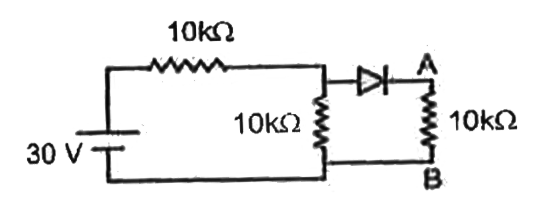
View SolutionIf the potential difference between A and D is V, what will be potential difference between F and C. each of the resistance is R.
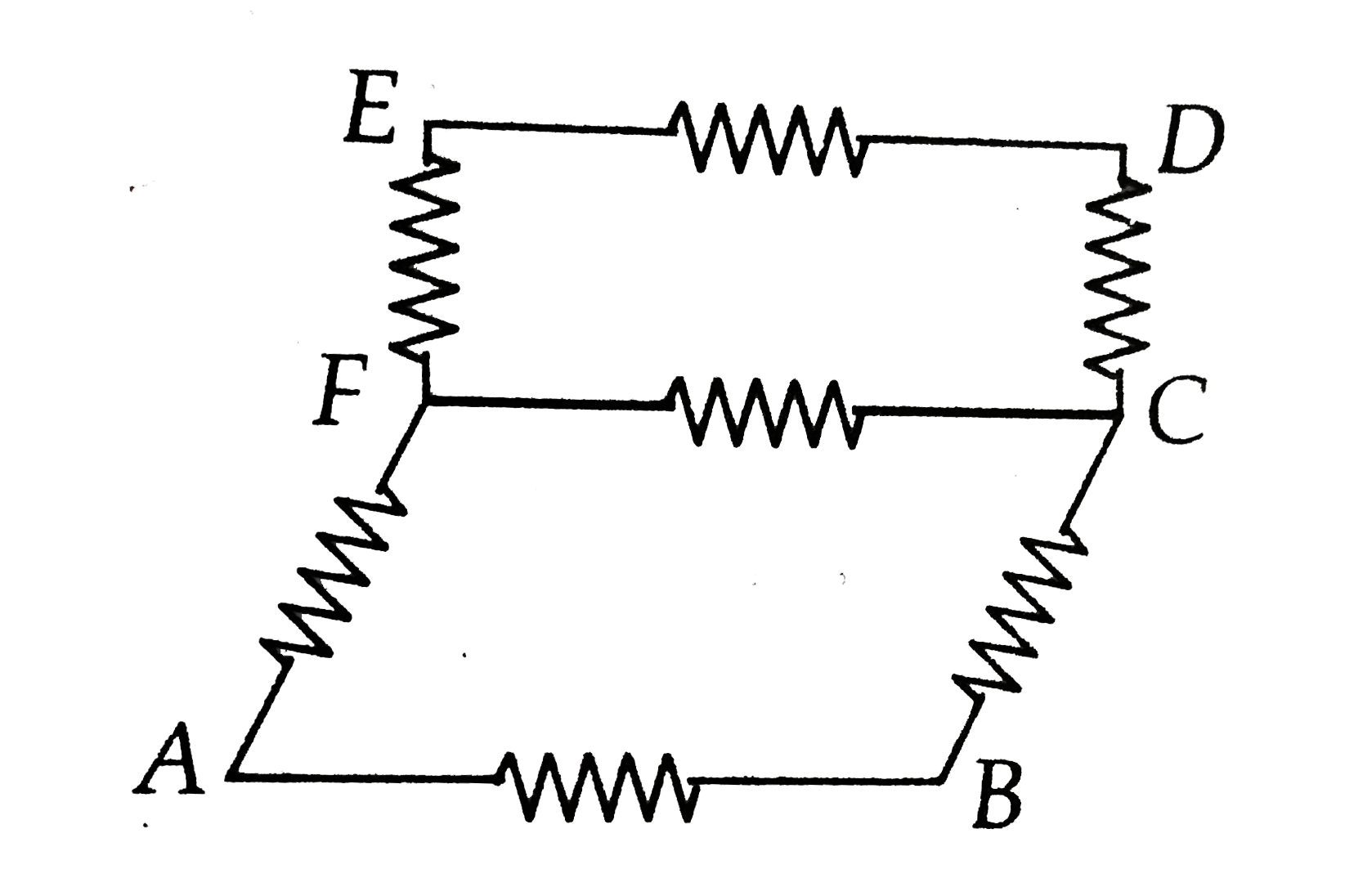
View Solution


